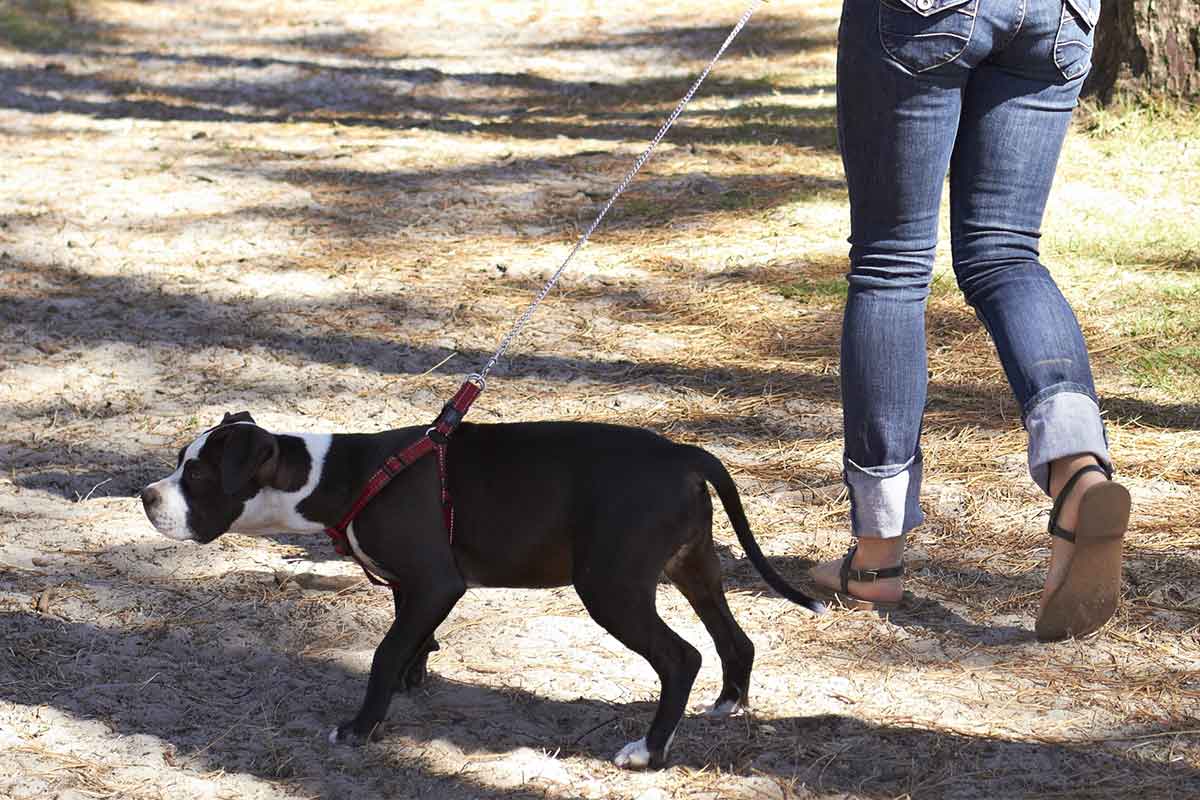Each day that I took Chipper out for a walk, I launched into high-attentive mode. My husky-golden retriever mix who lived to be 14 was quite friendly to all people and even all cats. And she was extremely loyal to and tolerant of dogs in her pack of pals, but when it came to encountering unknown dogs on walks or at pet events, she was quite the opposite of her name.
Chipper was reactive toward other dogs, making simple pleasures such as walks or pet events extremely challenging and stressful. As strange dogs neared us, the hair spiked up on her back as she leaned forward and erupted in a round of back-off barks and icy stares. But I am here to share with you some tips and tactics that enabled outings with Chipper to become win-win-win for other dogs, for her and for me.
Breathe
For starters, I learned to rein in my emotions. Dogs are savvy at reading our moods and reacting accordingly. I focused on taking deep breaths, walking with confidence and speaking to her in an upbeat, confident tone.
Other tactics to consider:
- Let loose of the death grip on the leash. When a dog comes into view, resist the inclination to rein in your reactive dog by holding the leash tightly. Your dog reads your actions as a definite need to strike a vigilant posture and to prepare for possible battle. Instead, seek out physical barriers in the environment, such as a bush, car, or tree to block direct eye contact between your dog and the other one. This simple maneuver can often tone down a dog who cannot see his “target.”
- Maintain control with a harness. Attaching the leash to the D-ring on a front clip harness might give you more control of your dog’s movements and reduces the risk of him suffering from a neck injury should he lunge at another dog. Consult a professional dog trainer about the proper way to fit your dog with a head halter such as a Gentle Leader so you can control your dog’s head movements safely.
- Time your walks. Learn when most dogs in your neighborhood are walked and strive to take your dog for walks in off-peak hours to minimize confrontations.
- Always have Plans B and C ready. Look ahead and all around your route. Keep your reactive dog from escalating by crossing the road or making a U-turn well before he can focus on the other dog. Or go from a leisurely walk into a brisk one or even a jog. Your goal is to avoid a confrontation before your dog displays any reactive postures and to keep him in a neutral emotional state.
- Bring treats and school your dog. Walks are ideal times to reinforce basic obedience cues and hone advanced cues such as having your dog perform a series of quick sit-downs (also known as doggy pushups) and practice “look at me” and “look at that” cues during the walks. Reward him with meaty treats to shift his attention from the oncoming dog and create a positive emotional state.
- Fend off dog-to-dog forced introductions. Some people declare that their dog “likes all dogs” and insist on having their dog breach your dog’s comfort zone. They also seem unable to hear your words of caution: “My dog does not like meeting other dogs.” Instead, get your reactive dog in a parked position off the sidewalk and facing you. As the person approaches, say loudly and cheerfully, “My dog is in training and we’re working on distractions. Would you please do us a big favor and just walk on by? It would mean a lot. Thanks.” That tactic worked for Chipper and me on many occasions. Other dogs might do better if kept moving and engaged with you rather than sitting off to the side.
- Opt for a color signal. For events such as a canine fun run, fitting your dog with a yellow bandana is a universal signal to others that your dog is not keen on interacting with other dogs.
My walks with Chipper became much more enjoyable once we instituted these tactics. Our bond of friendship and trust also deepened, resulting in Chipper focusing more on “us” on our outings and less on distractions such as other dogs.
Need more help? Ask your Fear Free Veterinary Professional who they recommend.
This article was reviewed/edited by board-certified veterinary behaviorist Dr. Kenneth Martin and/or veterinary technician specialist in behavior Debbie Martin, LVT








